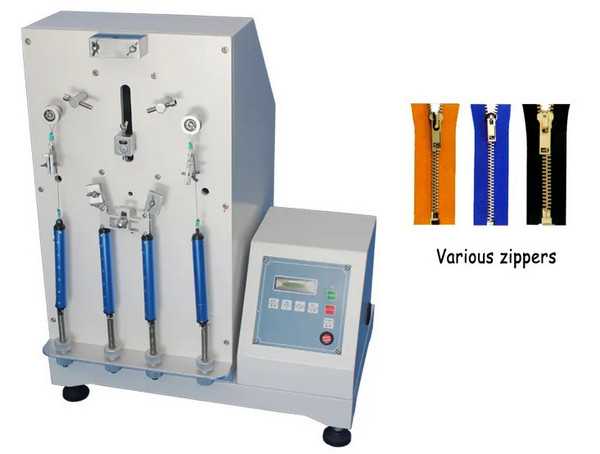
NewsInformation Center
What are the common reasons for zipper failure during a zipper test?
2023/04/19
Zippers are a commonly used device for connecting objects, and their quality and performance directly affect the life of the product and the satisfaction of the user. Therefore, testing of zippers is necessary to ensure that they meet the relevant standards and requirements. However, during the testing process, zipper failure sometimes occurs, resulting in inaccurate test results or the test cannot be performed. So, what are the common reasons for zipper failure during zipper test?


According to our years of testing experience, we have summarized the following possible causes of zipper test failure:
- The zipper material is not qualified. If the zipper material does not meet the required quality standards, such as metal zippers with uneven plating or peeling, plastic zippers with insufficient strength or cracks, nylon zippers with unstable fibers or fractures, etc., it will affect the durability and functionality of the zipper, leading to breakage, snagging, cracking and other failures in the test.
- The structure of zipper is not reasonable. If the structure of zipper is not reasonable designed, such as the fit between teeth and slider is not tight, the gap between slider and stop end is too big or too small, the stitching between teeth and cloth tape is not firm, etc., it will cause the zipper to loosen, fall off, slip off and other failures in use.
- Incorrect zipper operation. If the zipper is operated incorrectly, such as too hard or too light, wrong direction or unstable, too fast or too slow frequency, etc., it will cause unnecessary damage to the zipper, resulting in jamming, disconnection, deformation and other failures in the test.
- Unsuitable zipper environment. If the zipper is located in unsuitable environmental conditions, such as too high or too low temperature, too much or too little humidity, too much or too little dust, etc., it will have an adverse effect on the material and structure of the zipper, resulting in rust, discoloration, aging and other failures during the test.
The above is our summary of the common causes of zipper failure during zipper test, hope it will be helpful to you. If you need more information about zipper test machine, please visit our website or contact us.
Previous: A Comprehensive Guide to Color Assessment Cabinets and Color Rendering
N e x t : What is a xenon arc lamp test chamber and how does it work?



